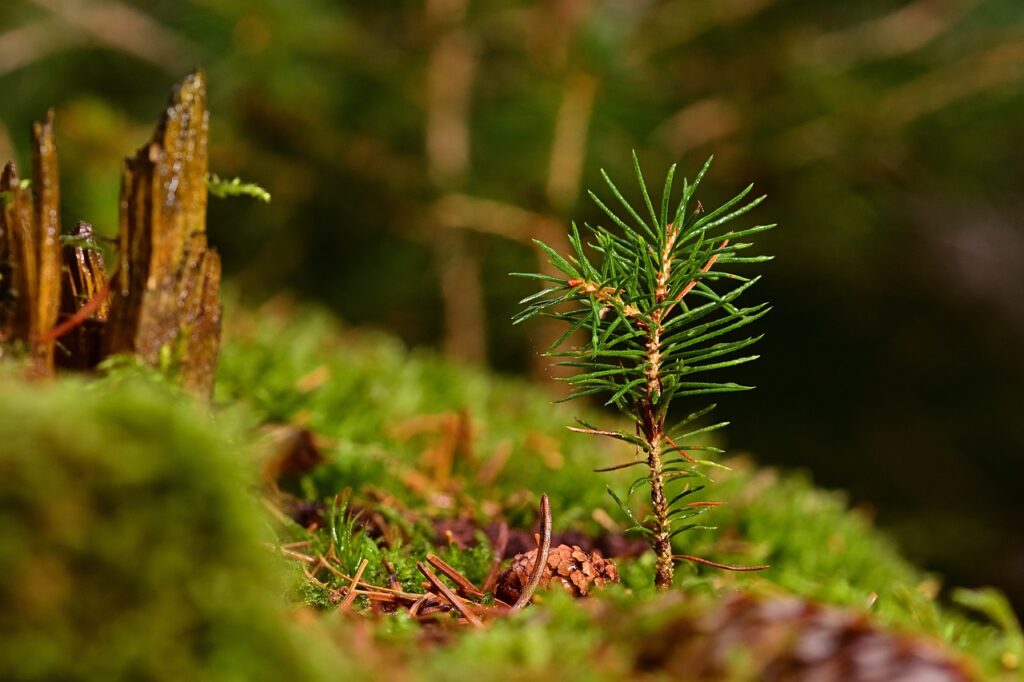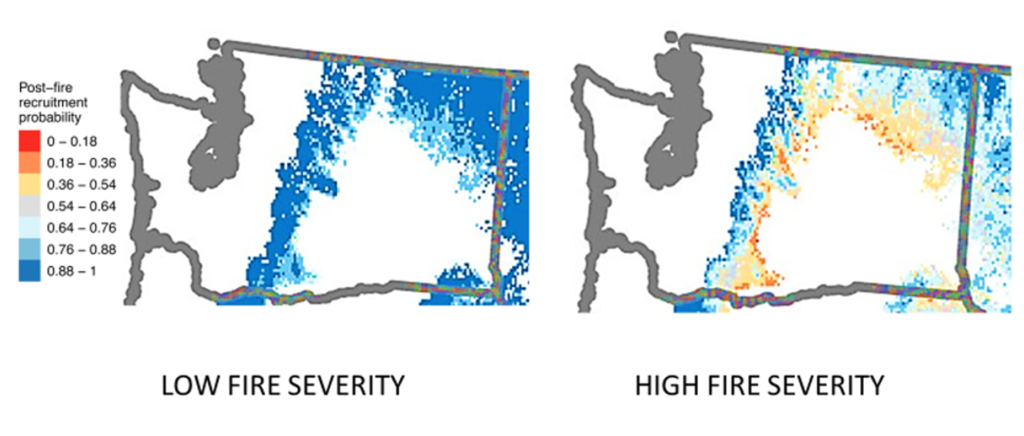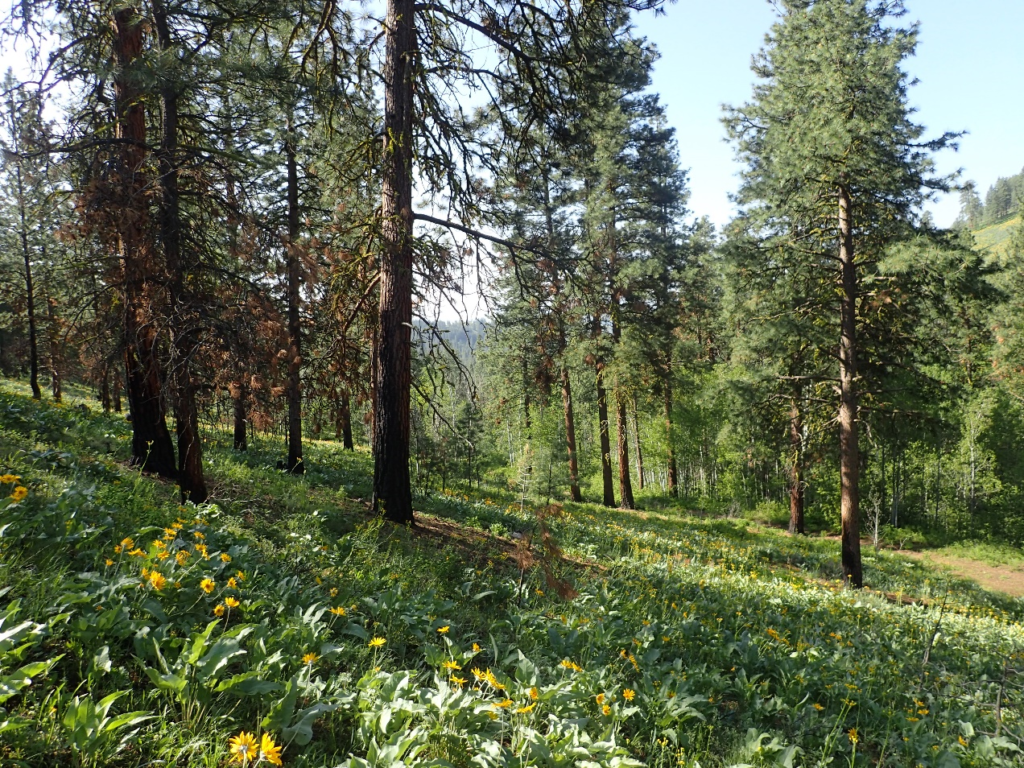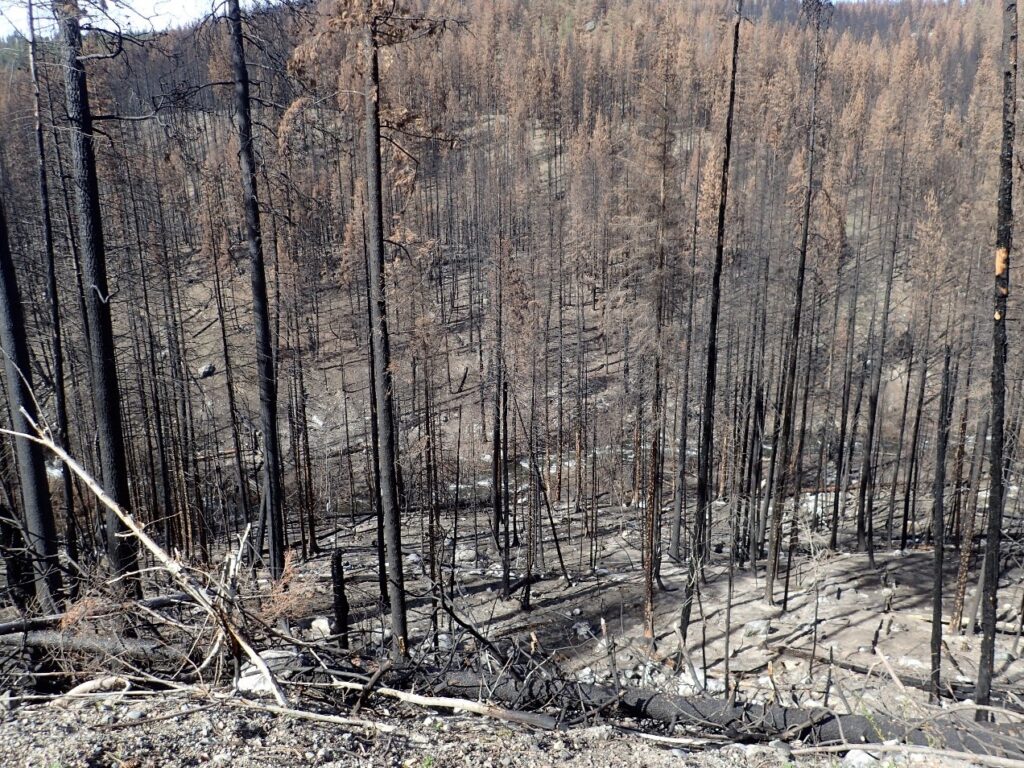A new study published in the Proceedings of the National Academy of Science illustrates why it is so important to reduce high severity wildfire as soon as possible. The multi-decade study showed that US Western forests impacted by wildfires aren’t regenerating at the same rate they did just 20 years ago.
The study determined the two main drivers for the decline in forest regeneration rates were:
1. An increase in high severity wildfires
2. Hotter, dryer conditions due to climate change

How does high severity fires reduce forest regeneration?
1. Reducing seed sources on the landscape:
Generally speaking mature trees can withstand and even benefit from low severity fires as they thin seedlings and saplings, and consume dry fuels on the forest floor. Unfortunately that isn’t true for high severity fire which kills between 70 and 100% of the mature trees. When large areas are burned severely, live trees are too distant to provide the seeds needed for forest regeneration.
2. Altering microclimate and soil properties:
Seedlings are highly vulnerable to drought for five years. High severity fire adversely affects the re-establishment of seedlings by increasing soil drought: scorched forest soils are less able to retain water, while reduced shading increases soil temperatures.
How much lower are regeneration rates for high severity fires?
The National Academy of Science determined the increase in high severity wildfires had more of an impact on declining forest regeneration rates than other factors. In fact their analysis showed that wildfire severity had more of an impact than increasingly hot, dry conditions (climate change). This high impact is clearly visible when you compare the regeneration probability success rates for the period of 2001 to 2020. The conversion from blue to orange/red in the maps below show the decreasing probability of successful regeneration following high severity fire.

What does this look like in the forest?
These images from the 2021 Cub Creek fire in the Methow Valley really tell the whole story. Forests that were previously thinned had lower severity fire, have largely recovered, even prospered. Forests that weren’t thinned had high severity fire, haven’t recovered.
Low Severity Wildfire

Previously thinned forest, low severity fire. Burned during the 2021 Cub Creek II fire. (Gina McCoy, May 2023)
High Severity Wildfire

Unthinned forest, high severity fire. Also burned during the 2021 Cub Creek II fire. (Gina McCoy, May 2022)
What do the models predict moving forward?
The National Academy of Science extrapolated the twenty years between 2031 and 2050. This shows the intensifying effect of fire severity on forest regrowth. Throughout the eastern Cascades, the window is closing for regrowth following high severity fire.

What can we do about it?
We need to find solutions that will accelerate the pace & scale of small tree thinning – the most proven, effective way to reduce high severity wildfires.
This is exactly what C6 Forest to Farm’s plan does.
By converting small trees into biochar, we’ll create a market for them and increase the pace and scale of thinning. This will reduce the risk of high severity wildfire. And by converting this biomass to biochar, instead of piling & burning it, we’ll reduce CO2 emissions and sequester carbon at scale.
Reduce risk of high severity fires
Reduce CO2 emissions, sequester carbon